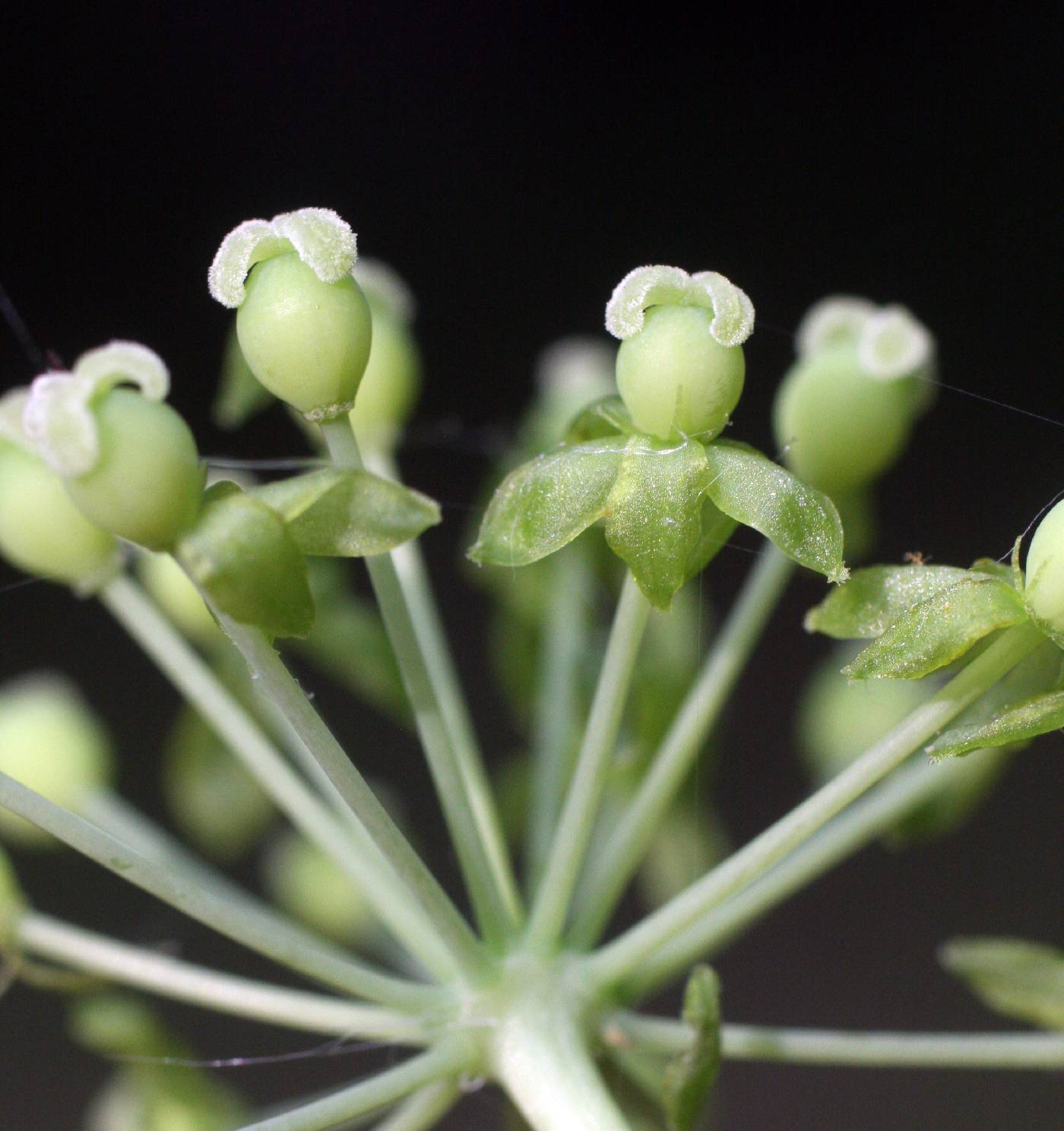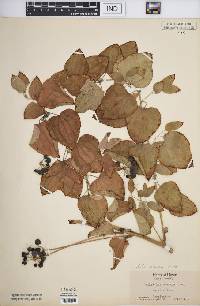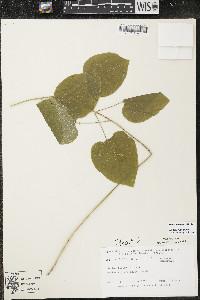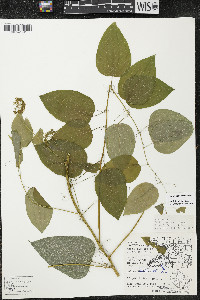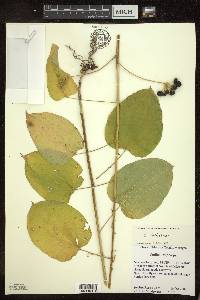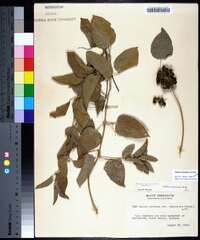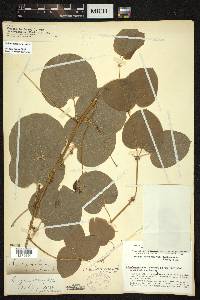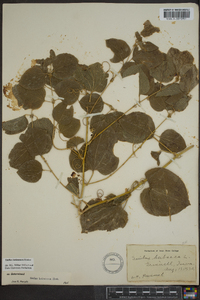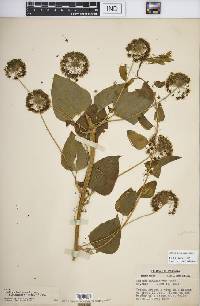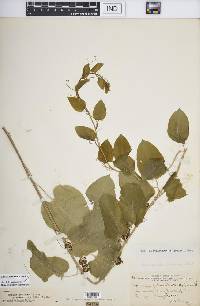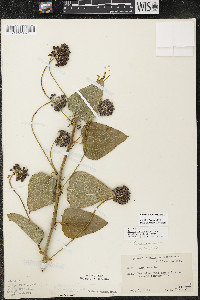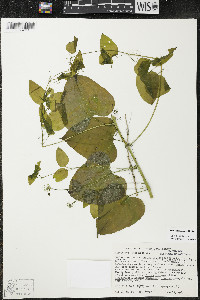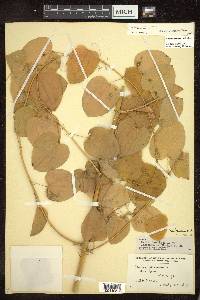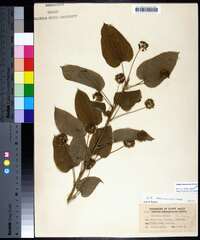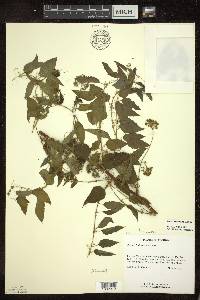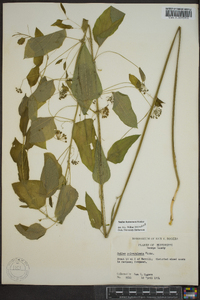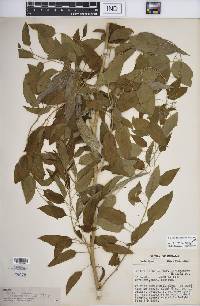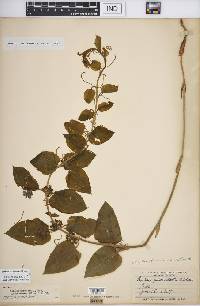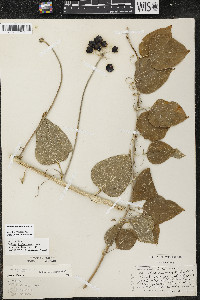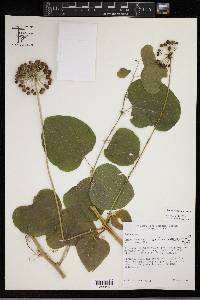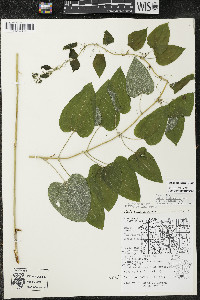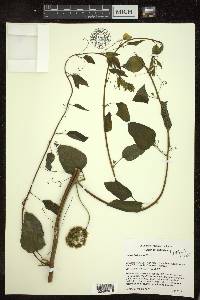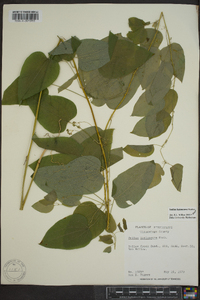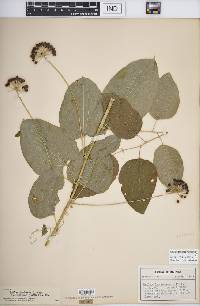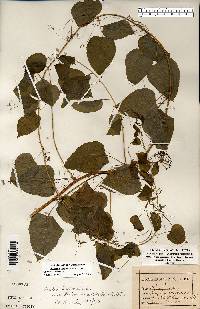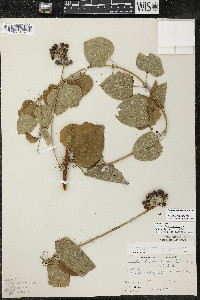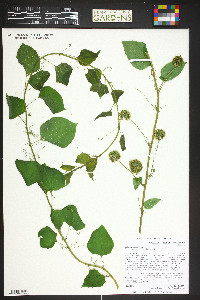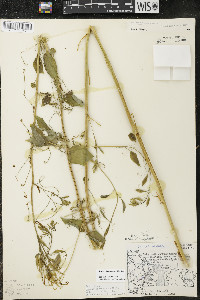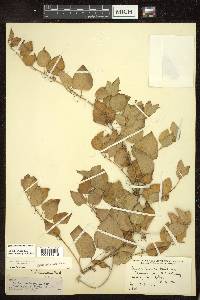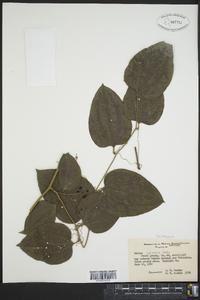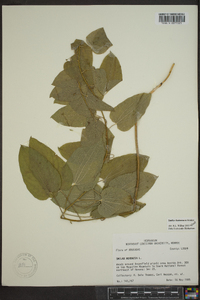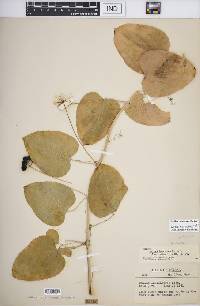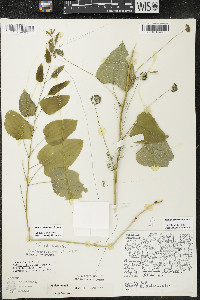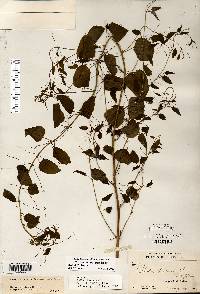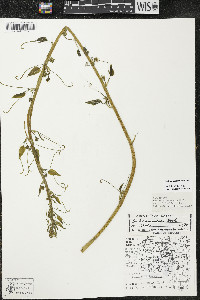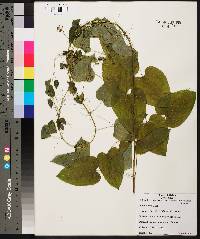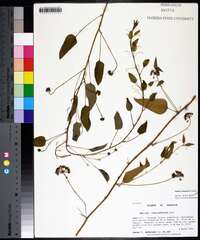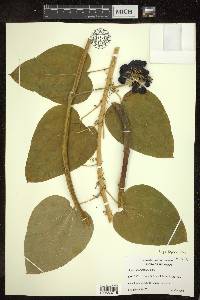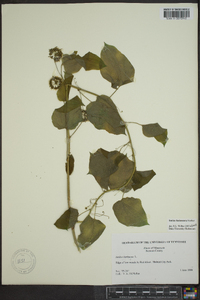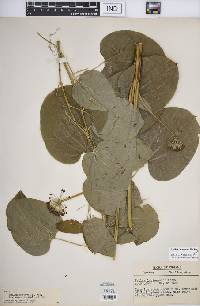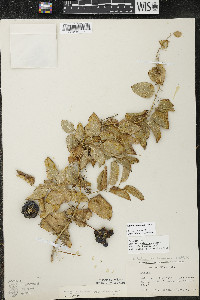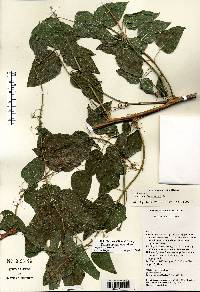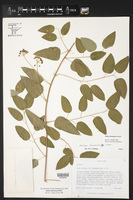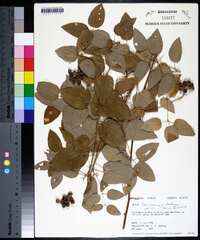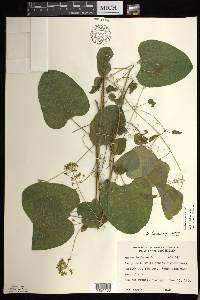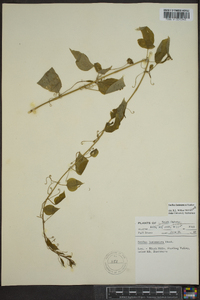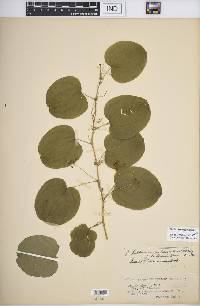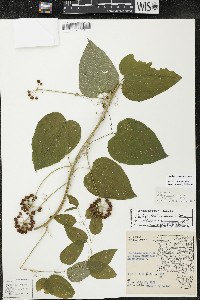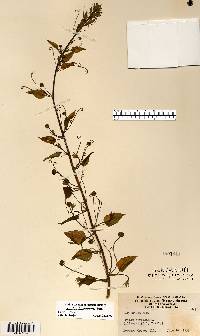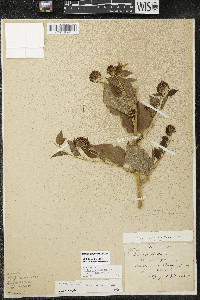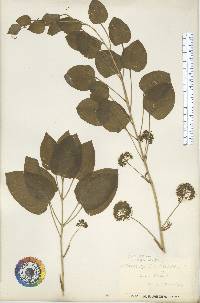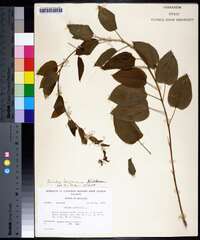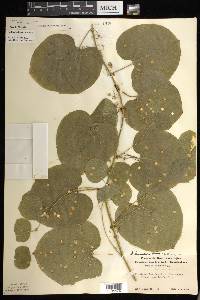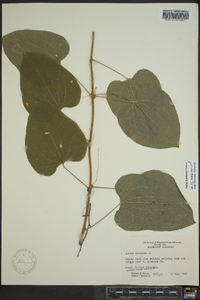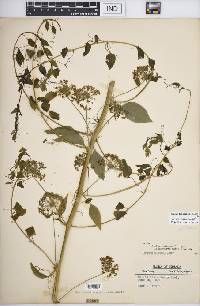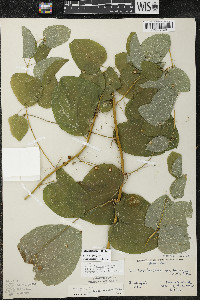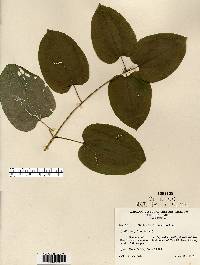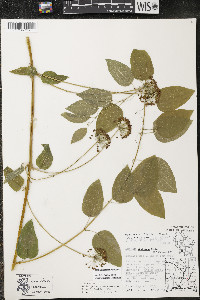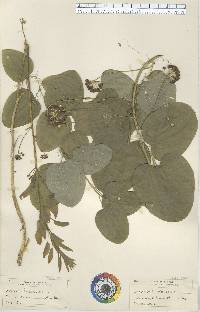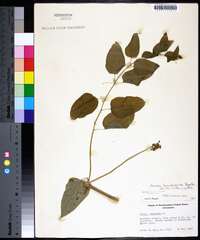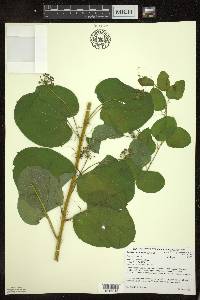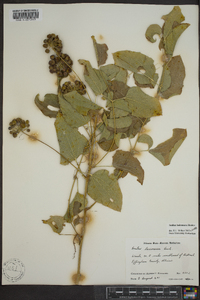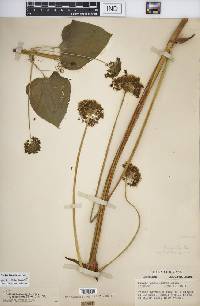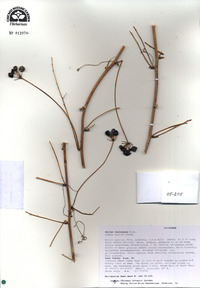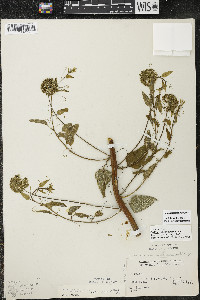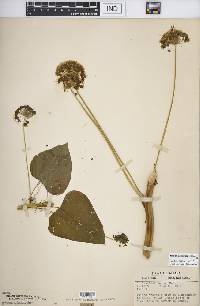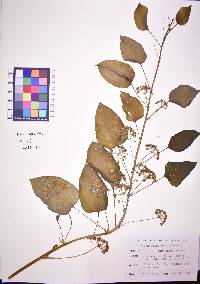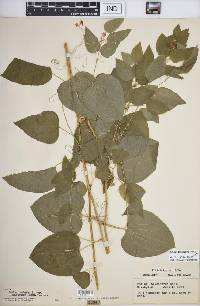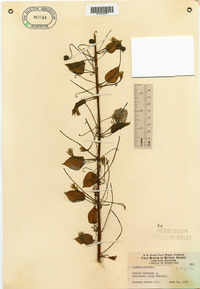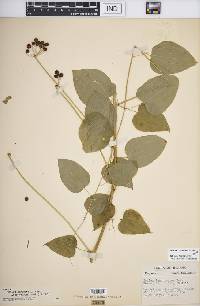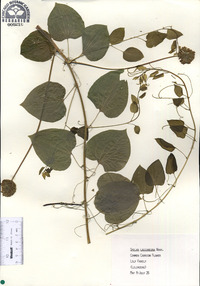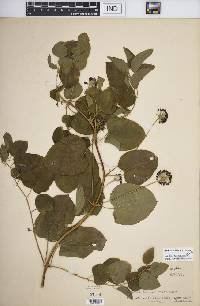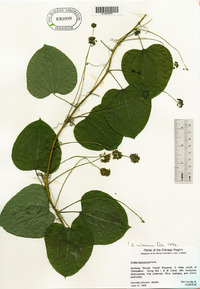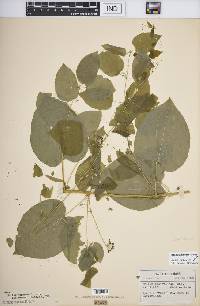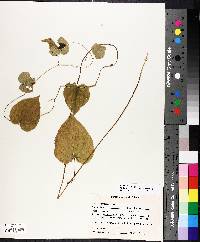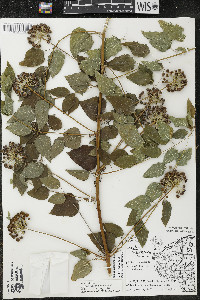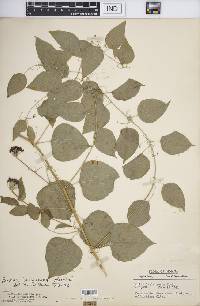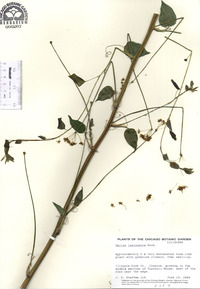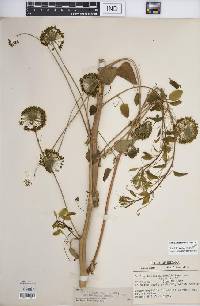Smilax lasioneura
|
|
|
|
Family: Smilacaceae
Blue Ridge Carrion-Flower, more...Blue Ridge Carrion-Flower
[Nemexia herbacea subsp. melica, moreSmilax diversifolia , Smilax herbacea subsp. lasioneura , Smilax lasioneuron Hook., Smilax tenuis] |
Herbs. Stems annual, erect to ascending, branched, 2-2.5 m, herbaceous, glabrous; prickles absent. Leaves evenly distributed, proximalmost smaller, narrower; petiole 1.5-9 cm, shorter than blade; tendrils numerous, long, functional; blade not lustrous, pale green abaxially, ovate to round, 4-8 × 3-6 cm, not glaucous, pubescent abaxially, with transparent trichomes, base cordate, margins entire, convex, apex acuminate to rounded and cuspidate. Umbels many, axillary to leaves, to 35-flowered, dense, globose; peduncle to 12+ cm, short. Flowers: perianth greenish; tepals 3.5-4.5 mm; anthers equaling or shorter than filaments; ovules (1-)2 per locule; pedicel 0.5-1.5 cm. Berries bluish black to black, subglobose, 8-10 mm, glaucous. 2n = 26. Flowering May--Jun. Rich, alluvial woods, thickets, borders; 300--700 m; Man., Ont., Sask.; Ala., Ark., Fla., Ga., Ill., Ind., Iowa, Kans., Ky., La., Mich., Minn., Miss., Mo., Mont., Nebr., N.Y., N.Dak., Ohio, Okla., Pa., S.Dak., Tenn., Tex., Wis., Wyo. Smilax lasioneura is primarily distributed in the central plains and lower elevations of the Appalachian and Rocky mountains. Plants distributed in the southern humid areas tend to be larger than those of more northern areas.
Perennial herbaceous vine 2 - 2.5 m tall Stem: erect to ascending, branched, hairless, lacking prickles, with spreading-ascending bracts near base. Leaves: alternate, numerous, stalked, 4 - 8 cm long, 3 - 6 cm wide, the lower leaves smaller and narrower, egg-shaped to round with a heart-shaped base and a pointed to rounded tip often having an abrupt point (cusp), margins convex, minutely hairy and paler beneath. Flowers: either male or female, found on separate plants (dioecious), borne on an inflorescence with branches radiating from a common point (umbel). The many dense umbels are borne axillary to the leaves, each being spherical and having up to 35 flowers with six greenish tepals 3.5 - 5 cm long. Fruit: a bluish black to black berry, 8 - 10 mm long, nearly spherical, covered with a whitish waxy coating (glaucous), containing three to six seeds. Tendrils: numerous, borne in leaf axils. Similar species: Smilax ecirrhata, Smilax illinoensis, Smilax herbacea, Smilax lasioneura, and Smilax pulverulenta are herbs without prickles. Smilax ecirrhata and S. illinoensis are erect, shorter than 1 m, and have zero to few tendrils and few umbels.Smilax herbacea leaves are hairless beneath, and S. pulverulenta leaves are shiny dark green and hairy beneath. Flowering: early May to late June Habitat and ecology: Frequent in woods, shaded dune slopes, clearings, old pastures, fencerows, roadsides and other open areas. Occurence in the Chicago region: native Etymology: Smilax is the ancient Greek name of an evergreen oak. Lasioneura means "hairy-nerved." Author: The Morton Arboretum From Flora of Indiana (1940) by Charles C. Deam The variety has the range and habitats of the species but is much more frequent, especially in sandy soil in the northern part of the state where it is somewhat frequent along roadsides. I admit that I do not know this species and its variety and the next species [Smilax ecirrhata]. My attention was first called to them when Pennell revised this section of the genus. For several years I have been assembling the aberrant forms in our garden with the hope that a study of them would solve the problem, but I have found that the plants of this genus grow very slowly and most of the specimens I have planted are not yet old enough for study. Ordinarily each rhizome sends up one stem, although I have one plant that had 8 stems in 1936 and 9 in 1937. The number of stems from a single rhizome seems yet to be ascertained. This variety is so extremely variable that it seems that no character will hold to separate a large series of plants. I think the complex consists of several forms that might well be recognized. We have some plants that reach 4-6 feet in height that are simple and others that are usually 3-5 feet that are so much branched that they form a compact mass. Some plants will be in flower when others are just peeping through the ground. Some will have 1-3 long peduncles below all the leaves while others will have the peduncles mostly about the middle of the stem. Some plants have wide leaves, few peduncles, and only a very few tendrils, and in all the herbaria I have visited they are referred to Smilax ecirrhata, but they can always be separated from that species by their tendrils and, what I think to be our best character, the fewer-flowered umbels. Under this variety I have included several forms which I hope can be satisfactorily distinguished by someone in the future. …… Indiana Coefficient of Conservatism: C = 4 Wetland Indicator Status: N/A Diagnostic Traits: branched herbaceous plant reaching to >1 m; prickles lacking; tendrils from many nodes; lower leaf surface pubescent and pale green; lower inflorescences from blade-bearing leaves. |

